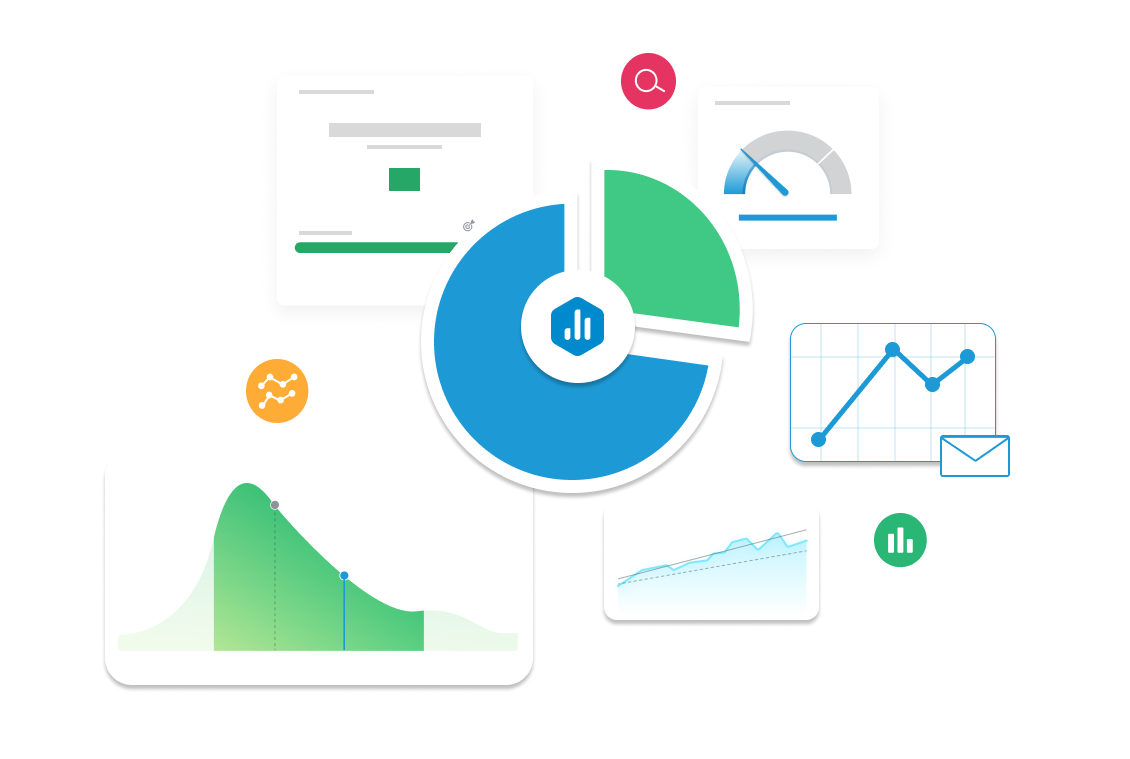Marketing ROI (Return on Investment)
Discover the Marketing ROI KPI and affects your marketing. Learn how to improve your return on investment & enhance your performance.

| Category |
Marketing |
|---|---|
| Type |
Lagging indicator |
| Calculation |
ROI = ((Revenue from Marketing – Marketing Cost) / Marketing Cost) × 100 |
| Measure |
Marketing ROI measures how much revenue is generated for every dollar spent on marketing. It helps businesses understand whether their marketing efforts are profitable. |
| Data Sources: |
GA4, Hubspot, Salesforce, Google Ads, Facebook Ads, LinkedIn Ads, Shopify, Woocommerce |
| Frequency |
Real-time, Weekly, Monthly, Quarerly, Yearly |
Example target
Achieve a 500% ROI on paid ads this quarter (meaning for every $1 spent, they earn $5 back).
Example Reports Use Case
Marketing ROI helps businesses decide where to invest their budget. If ROI is high, the strategy is working. If it’s low, adjustments are needed.
A CMO may use this KPI in a quarterly report to show the leadership team which campaigns were the most profitable. A performance marketer may track ROI weekly to adjust ad spend in real time.
What is Return on Investment (ROI)
Return on Investment (ROI) is a core metric that shows how much profit you earn from a specific investment. It answers a simple question: “Was it worth it?” Whether you’re running a marketing campaign, launching a new product, or hiring a new sales team, ROI tells you if the money you spent led to meaningful returns.
This KPI measures the efficiency and effectiveness of your spending. A positive ROI means your investment made money; a negative ROI means it lost money. It’s essential for marketers, business leaders, and finance teams to evaluate performance and guide smart decision-making.
The basic formula is:
ROI = (Net Profit ÷ Investment Cost) × 100
For example, if you spent $1,000 on a campaign and earned $1,500 in profit, your ROI is 50%. ROI helps compare different strategies, prioritize budgets, and improve long-term profitability across all areas of the business.
How to Calculate Return on Investment (ROI)
ROI is usually calculated with this simple formula:
ROI = (Net Profit ÷ Investment Cost) × 100
But depending on your goal, there are different ways to look at it:
1. Monthly or Yearly ROI
Use this to track how investments perform over time.
Example: If a $1,000 ad campaign earns $300 in profit in one month:
ROI = (300 ÷ 1,000) × 100 = 30% monthly ROI
2. ROI per Channel
Break it down by source—like email, paid ads, or social media—to see what’s working best.
Example:
-
Paid ads: $500 profit ÷ $250 spend = 200% ROI
-
Email: $100 profit ÷ $50 spend = 200% ROI
3. ROI per Customer or User
This tells you how much return you get from each person. Great for customer-focused strategies.
These variations help you compare results, adjust budgets, and make smarter investment decisions.
Why Return on Investment (ROI) Matters
Return on Investment (ROI) is one of the most important KPIs because it shows whether your spending is paying off. It helps you understand if the money you put into a project—like a marketing campaign, new tool, or product launch—actually leads to profit. A high ROI means you’re making smart, efficient investments; a low or negative ROI means something isn’t working.
Tracking ROI helps businesses grow profitably by focusing resources on what delivers the most value. For example, if two ad campaigns cost the same but one has double the ROI, it’s clear which one deserves more budget.
Marketers use ROI to justify ad spend, sales teams use it to evaluate strategies, and executives rely on it to guide high-level decisions. When monitored regularly, ROI helps identify what’s driving success, where to cut waste, and how to improve performance across all departments. It’s essential for aligning actions with business goals.
Related KPIs to Return on Investment (ROI)
ROI is closely tied to several other KPIs that influence how much value your business gets from its investments. Tracking these together gives a full picture of performance and profitability.
ROI vs. Customer Acquisition Cost (CAC)
CAC tells you how much it costs to gain a customer. If CAC goes up but revenue doesn’t increase, ROI will drop. Lowering CAC while keeping sales steady boosts ROI.
ROI vs. Lifetime Value (LTV)
LTV measures how much a customer is worth over time. A higher LTV means more revenue from each customer, which improves ROI. If LTV drops, ROI suffers even if CAC stays the same.
ROI vs. Conversion Rate
Conversion rate impacts how efficiently campaigns turn visitors into customers. A higher conversion rate often leads to higher ROI because you’re getting more results without increasing costs.
Together, these KPIs help marketers, sales teams, and executives make smarter, data-driven decisions that improve both short-term wins and long-term growth.



